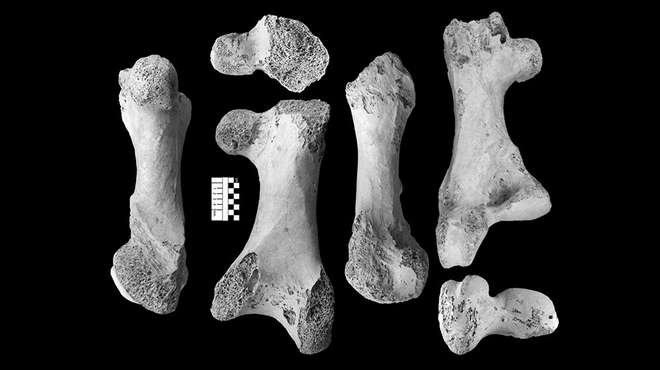Around 500,000 to 1,000,000 years ago, a massive bird roamed the woodlands and forests of prehistoric Madagascar, unaware of the title it would eventually hold in Earth’s fossil record.
A new study identified Vorombe titan (“big bird” in Malagasy and Greek) as the largest bird to walk the planet. This extinct avian grew to up to 3 meters in height and nearly 800 kg in weight. To put things into perspective, Vorombe titan was as heavy as Europasaurus (690 kg) and Magyarosaurus (700-1,000 kg), two of the smallest sauropod dinosaurs.
“Big bird”: A titan among titans
As the name implies, elephant birds were gigantic flightless birds that lived during the Late Quaternary period.
Interestingly, Vorombe titan has long been the center of a taxonomic conundrum. Prior to its discovery, scientists only recognized two genera of elephant birds, Aepyornis and Mullerornis. The revelation of Vorombe titan in 1894 by British scientist C.W. Andrews would eventually lead to scientists rethinking this. Initially thought to be nothing more than an “unusually large specimen” of Aepyornis maximus, the shape and size of Vorombe titan‘s bones were different enough to merit it being classified as an entirely different genus.
“Elephant birds were the biggest of Madagascar’s megafauna and arguably one of the most important in the islands evolutionary history — even more so than lemurs,” explained Dr James Hansford, a scientist from the Zoological Society of London (ZSL) who conducted the study.
With simple measuring tools (a pair of calipers and a tape measure), Dr Hansford and fellow study author Dr. Samuel Turvey examined over 300 different elephant bird bones from across the globe. Using Bayesian clustering — a method of generating cluster probabilities for individual belonging in specific clusters — the researchers determined that Vorombe titan was indeed the largest bird to ever exist, effectively ending a debate that has lasted for over a century.

Big bird, big bones. Credit: ZSL
Two birds with one stone
Aside from cementing Vorombe titan‘s “big bird” reputation, the study also revealed “unexpected diversity” in the elephant bird family.
Prior to the study, scientists thought that there were 15 different elephant bird species under two genera. However, the study — the first taxonomic reassessment of elephant birds in roughly 80 years — revealed three genera and at least four unique species.
“Without an accurate understanding of past species diversity, we can’t properly understand evolution or ecology in unique island systems such as Madagascar or reconstruct exactly what’s been lost since human arrival on these islands,” said Dr Turvey. “Knowing the history of biodiversity loss is essential to determine how to conserve today’s threatened species.”
Now that this puzzle has been solved, these scientists can finally stop comparing the sizes of their birds.
Cover photo: Jaime Chirinos/ZSL.org
Reference
- https://www.zsl.org/science/news/zsl-names-world%E2%80%99s-largest-ever-bird-%E2%80%93-vorombe-titan
- http://rsos.royalsocietypublishing.org/content/5/9/181295
Author: Mikael Angelo Francisco
Bitten by the science writing bug, Mikael has years of writing and editorial experience under his belt. As the editor-in-chief of FlipScience, Mikael has sworn to help make science more fun and interesting for geeky readers and casual audiences alike.







